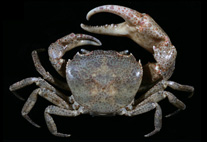Abstract
At least 15 species of aphids are now recognised as New Zealand natives and most of these are very likely to be endemic. Most native aphids belong in the subfamily Aphidinae (Aphidini), with a possible single species in Aphidinae-Macrosiphini, at least two in Neophyllaphidinae and one in Taiwanaphidinae. With one exception, native aphids are restricted to a single host plant genus, and these hosts are from 13 genera and 12 plant families in the Pinales and Angiospermae— Eudicotyledonae, suggesting that the aphids are a remnant fauna. No known native aphids have host plants from the Pteridophyta or Angiospermae—Monocotyledonae, with the possible exception of two possibly native species extracted from native tussock grassland turfs. Most host plant genera have some degree of Gondwanan distribution, but only two indigenous species are found on large forest trees and only one host is deciduous. Native aphids have been recorded from sea level to the subalpine zone, reflecting their host plant distributions. Sexual reproduction, followed by several parthenogenetic generations on the same host plant, appears to be the norm for most species. Eggs appear to be used for surviving winter conditions in some species and summer conditions in others. Native aphid distribution and abundance varies with five species considered to be scarce, one species localised, two species sparse and three relatively common based on current knowledge.

